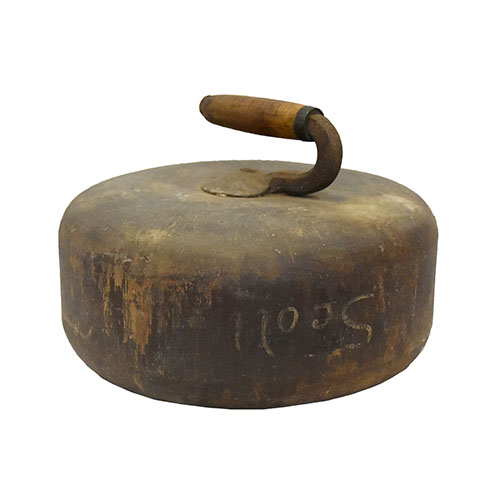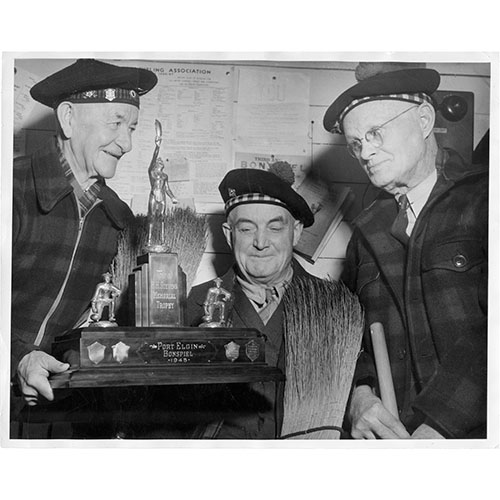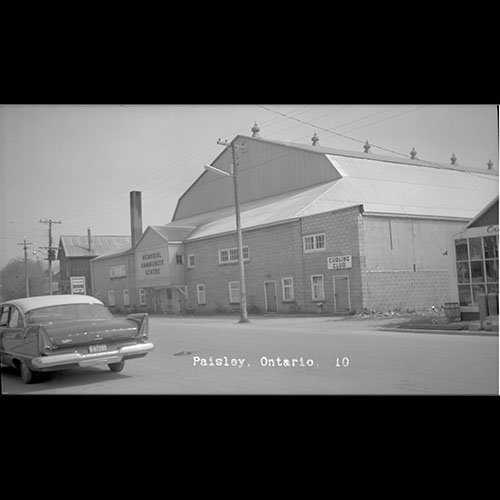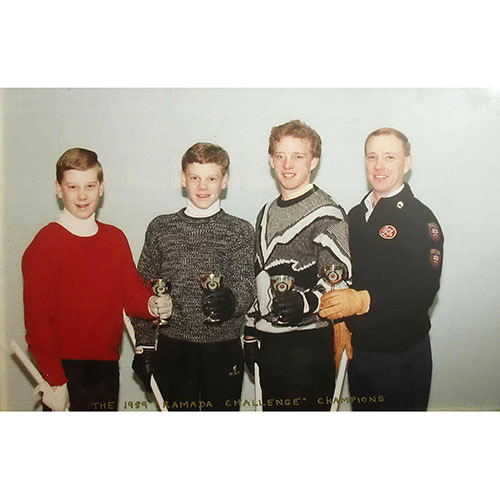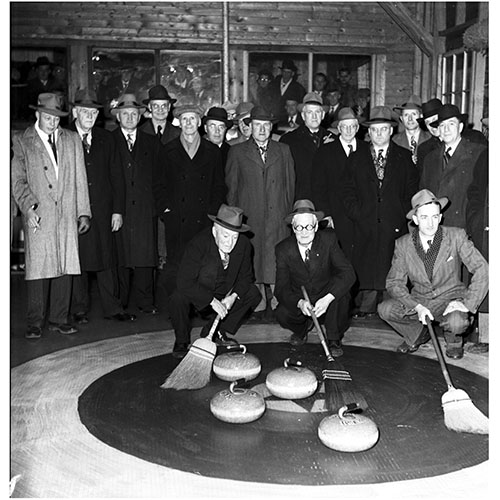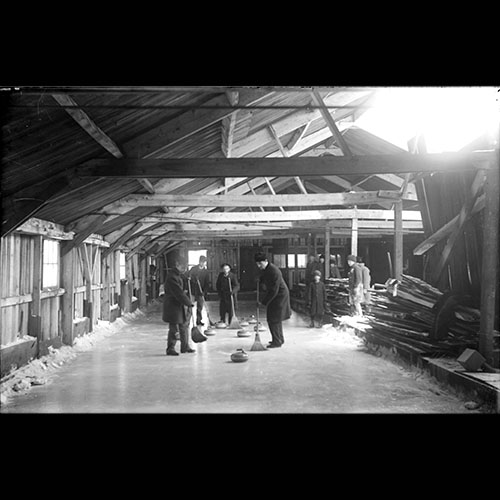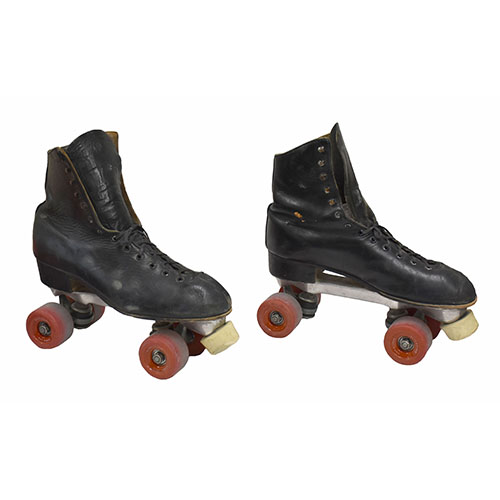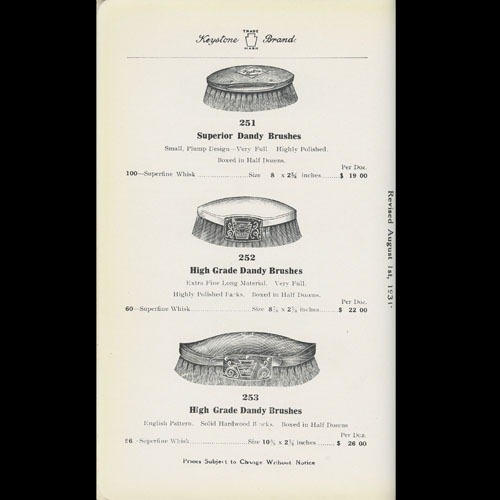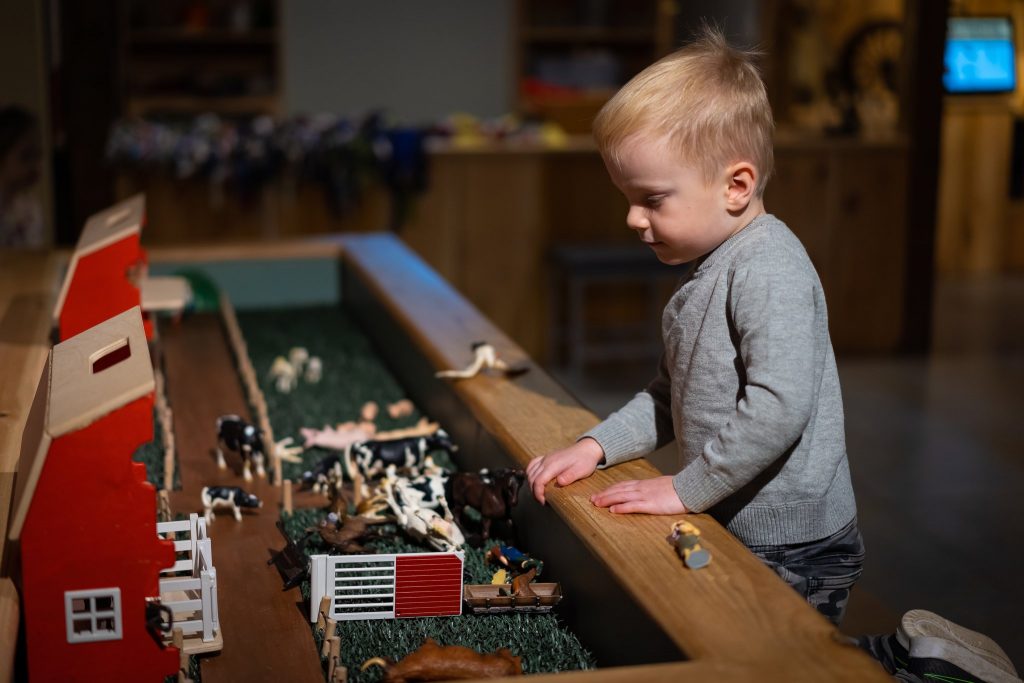With a large percentage of early settlers being Scots, and good cold winters for ice, it’s no surprise that curling had an early start in Bruce County. At the outset there were no official clubs, just enthusiastic folks getting together to play, but it didn’t take long for clubs to get started. Some of the earliest established were Walkerton in 1870, Southampton around 1870 and Kincardine in 1875. The Kincardine club joined the Ontario Curling Association in 1877, just three years after the Association was formed, making it one of the oldest existing Association members.
Playing on ice with the proper conditions was something of an on-going struggle with most clubs, well into the 20th century. Many curling clubs took place in church driving sheds which were draughty, and snow came in between the cracks in the walls and roofs. Others played on shared surfaces used for both hockey and skating. Others played on the frozen rivers. For the most part, artificial ice did not make its way into Bruce County until the 1950s and 1960s, making ice conditions dependent on the weather even when indoors.
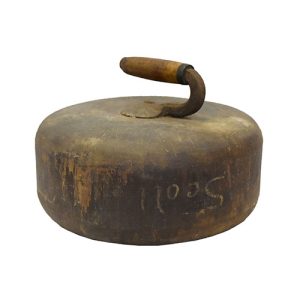 Proper granite rocks were expensive, so settlers made their own wooden ones, either attaching iron handles made by a local blacksmith or wooden ones. When they travelled for bonspiels, they took their own rocks with them in wooden trunks. The wooden rock seen here was made ca. 1860 and was used by Robert Scott of Dunblane, who curled on the Saugeen River near the Dunblane Church.
Proper granite rocks were expensive, so settlers made their own wooden ones, either attaching iron handles made by a local blacksmith or wooden ones. When they travelled for bonspiels, they took their own rocks with them in wooden trunks. The wooden rock seen here was made ca. 1860 and was used by Robert Scott of Dunblane, who curled on the Saugeen River near the Dunblane Church.
Originally a men’s game, the women’s side of curling clubs began to make their official appearance in the 1950s. The Paisley Curling Club seems to have been ahead of others when it came to the inclusion of women to the sport, naming Marie Stoddart, along with Stuart Howe, as presidents of the club in 1948.
1976 was a bad year for curling in Bruce County as several curling clubs and arenas were deemed unsafe, as they no longer were up to modern building codes. Some rinks had been used for many years; Allenford’s had been used since 1910. Other arenas deemed unsafe that year were Southampton, Chesley and Teeswater. All these communities rallied and built new facilities within a few years.
Below are some brief histories of curling clubs that at one time were found throughout Bruce County.
Walkerton
Before the start of an official club, curling was done on Joseph Walker’s mill pond. According to a story found in Norman Robertson’s “History of the County of Bruce…”, the wooden rocks they used were left on the pond for the whole of the season. One time there was a thaw and a freshet flowed through the mill pond taking the stones over the dam wall and into the Saugeen River. That event led the formal formation of a club with proper stones and the use of a rink. Their first indoor ice was in the drill shed, which was also a skating rink. In 1890 the club won the Ontario Silver Tankard.
Shortly after the turn of the 20th century a curling rink was built on Yonge St. This was used until 1920 when it was condemned. Curling interest began to wane, but a group of folks continued to play in the Agricultural Building. As interest began to pick back up, improvements were made to the building. Artificial ice was installed in 1953; prior to that when it stormed, snow came into the building and the wind put ridges on the ice. In 1967 a new facility was built alongside the golf course, and the modern Walkerton Golf and Curling Club was born.
Southampton
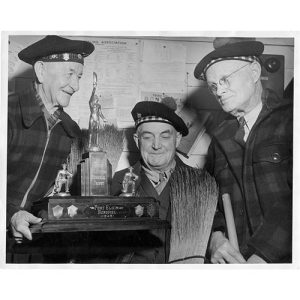 Around 1870 a three-sheet curling facility was built on Victoria St. This was condemned in 1916, and later demolished. Curling continued on the skating rink until 1927/28 when a two-sheet rink was built beside the skating rink. The ladies’ side of the club began in 1956. In 1960 artificial ice was installed. In 1967, the arena was deemed unsafe and had to be closed. The Southampton Curling Club sprang into action and raised the funds for the new curling annex to the Southampton Coliseum themselves. This facility opened in 1977 and is a four-sheet rink.
Around 1870 a three-sheet curling facility was built on Victoria St. This was condemned in 1916, and later demolished. Curling continued on the skating rink until 1927/28 when a two-sheet rink was built beside the skating rink. The ladies’ side of the club began in 1956. In 1960 artificial ice was installed. In 1967, the arena was deemed unsafe and had to be closed. The Southampton Curling Club sprang into action and raised the funds for the new curling annex to the Southampton Coliseum themselves. This facility opened in 1977 and is a four-sheet rink.
At the turn of the 20th Century, the Southampton Curling Club was a force to be reckoned with and won many prized including the Governor Generals Cup in 1902 and 1908, the Glen Cup in 1904 and 1906, the Northern District Tankard in 1896. Though many contributed to these prizes, two outstanding players during this time were Donald Brock MacAulay and George “Moose” McIver. The photo seen here is Brock MacAulay and Moose McIver, along with Jack McVittie with the H.H. Stephens trophy in 1945.
Burgoyne
The Burgoyne Curling Club began in 1944. The ice they used was in the Knox Presbyterian Church shed, which was also used as a skating rink. To get started, the Port Elgin Curling Club donated three pair of stones, which were then sold to members for $3 per pair giving the club $9 to start their operations. In the 1947-48 year the club rented the rink five nights a week for $15 per month and paid the hydro bill. Curling was popular there and the Burgoyne club hosted many bonspiels. With the installation of larger ice surfaces, and improved winter driving conditions, players from this area began to travel to the larger centres to play.
Lucknow
Curling was popular at the turn of the 20th century and continued in starts and stops through time. A club was started during the 1950s but became inactive again and player began travelling to other larger clubs such as Ripley.
Tara
In Tara’s time there have been eight rinks. Though not mentioned in the history books until the 7th and 8th incarnation of the rink, it is very likely curling was already well established in the community. In 1946, the Arran-Tara Agricultural Society built a pavilion which could be flooded and was used for curling in the winter months. This was used until 1975 when the Arran-Tara Community Centre was built which included separate rinks for curling, hockey, and skating.
Paisley
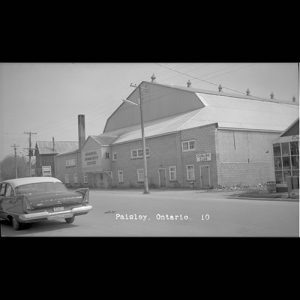 The Paisley Curling Club was established in 1894. A rink was built along with the Memorial Arena in 1948. During the first season in the new arena, curling was played on a sheet of ice under the seats. The first set of rocks the club purchased were matched sets from Scotland. In 1960 they added a club house to the rink. The photo of the Memorial Arena and Curling Club seen here dates between 1950 and 1960.
The Paisley Curling Club was established in 1894. A rink was built along with the Memorial Arena in 1948. During the first season in the new arena, curling was played on a sheet of ice under the seats. The first set of rocks the club purchased were matched sets from Scotland. In 1960 they added a club house to the rink. The photo of the Memorial Arena and Curling Club seen here dates between 1950 and 1960.
Ebenezer
The Ebenezer Curling Club was organized in 1953, with the ladies organizing themselves in 1954. Their rink was in the Ebenezer Church shed. The men curled three times a week, while the ladies only did once, however because of the natural ice, and the steel roof on the shed, weather often dictated when the ice was good, so postponed games were played morning, afternoon, and night. The ladies paid local farmers $10 to act as a caretaker of the ice. In 1969, they couldn’t get anyone, and the men’s teams took turns acting as caretakers. The church property was sold in 1972/1973, and the last meeting of the Ebenezer Curling Club was February 1973.
Chesley
Curling was established in Chesley before the formation of the first ice rink. The Chesley Curling Club was formed in 1898. Curlers had their own stones, but the club won some as a prize in 1899 at an Owen Sound bonspiel. They reached the Ontario Tankard finals in 1902. Though at the mercy of the weather, the ice was pebbled by dragging a water filled pipe with holes in it across the ice. In 1910, with a large membership, the club built its own rink, that required the use of a wooden swing bridge across the river to get to. In 1929, due to a large snow, the roof caved in, and it was not rebuilt.
During the years surrounding the Second World War membership waned, however there was a resurgence in the 1950s. Though they shared a natural rink with hockey and skating the membership continued to increase, until once again the club decided to build its own rink. The club purchased land from the Hospital Board, and the new rink was built on the south-west corner of the hospital property. In 1957, the ladies were invited to curl, and the ladies club was established that same year. In 1960, the club invited the curlers from Desboro to join.
In 1976 this facility was deemed unsafe, so the club wanted to build a new one on a new site. It was decided to build in conjunction with the community centre and ice arena. The new rink had four ice sheets. It was also during this time the club decided to amalgamate the ladies and the men into one club.
Belmore
The Belmore Curling Club was originally known as the Howick Thistles Curling Club and they met on a purpose-built rink in Lakelet. As most of the curlers came from Belmore, it was decided to build a rink closer, and the farm of John Renwick on the Carrick/Howick Townline. This new rink was built by hosting a bee in 1888, but it was sold in 1900.
In the 1922/23 Reverend N. McKenzie organized a club in Belmore, using the Methodist Church shed which was no longer in use. In 1951 a memorial arena was built, and curling took place on shared ice. In 1977 a new complex was erected featuring two-sheets in the design. In 1988, the club and more than 100 members and continues today.
Teeswater
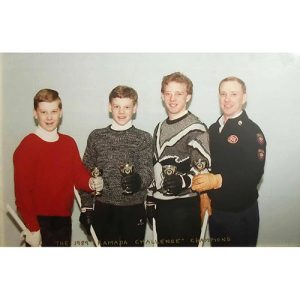 A curling club was started in Teeswater in 1878, and was using a building on Elora St. Around 1910, an early resident remembers curling on a sheet beside the skating are in a rink located on Clinton St. But the Teeswater Curling Club in its modern form was established in 1954 when those interested in starting a club canvassed the community for members and raised funds for the purchasing of forty pairs of unmatched stones.
A curling club was started in Teeswater in 1878, and was using a building on Elora St. Around 1910, an early resident remembers curling on a sheet beside the skating are in a rink located on Clinton St. But the Teeswater Curling Club in its modern form was established in 1954 when those interested in starting a club canvassed the community for members and raised funds for the purchasing of forty pairs of unmatched stones.
When the arena floor was cemented, and artificial ice installed in 1965 the club invested in matching stones. In 1967, the arena was condemned. In 1980, after sharing ice, it was decided to build a new club. At the same time the Teeswater Agricultural Society was looking to build an indoor show arena. A partnership was struck and a dual-purpose building, the “Agri-curl” was built.
The Teeswater Curling Club has a long list of champions curlers and is still going strong today. Seen here are Dave Hawkins and his sons, Tom, Don and Mike, who were the 1989 Ramada Challenge Champions (first winners of the challenge). At the time of the win, Tom Hawkins was only thirteen years old. Subsequent years included the “Hawkins Rule” which made it mandatory that players be nineteen years and older.
Lion’s Head
The Lion’s Head Curling Club began in the fall of 1968. Their first stones were purchased from the Allenford Curling Club. By the early 1970s there were around 100 members with curling taking place on Sunday and Monday nights. Bonspiels were always a big draw and featured a potluck supper. The aims of the club were to promote the game of curling through its competitions and otherwise, and to foster friendly feelings amongst its members; and objective it still carries out today.
Wiarton
Interest to form a curling club began in the late 1950s when folks began travelling to Allenford to play on weekday afternoons. Through the summer and fall of 1959 a draw was held, and the proceeds went to purchasing rocks.
Curling began in the Wiarton Arena in 1960 on Monday nights, and by 1963 the Wiarton District Curling Club had been built and curling began Boxing Day of that year. In 1966 the men’s club joined the Ontario Curling Association and the ladies joined the Southern Ontario Ladies Curling Association.
Port Elgin
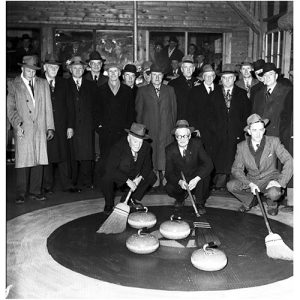 The first curling rink in Port Elgin was built in 1880 by Dan Campbell located in the alley between Emma and Gustavus streets on Bricker. The rink had posts down the centre with a board walk on each side. In 1885, Mr. Campbell built a roller rink on Green and Bricker Streets, which doubled as a rink. This rink went through many owners before being sold to the Town of Port Elgin in the late 1940s/early 1950s.
The first curling rink in Port Elgin was built in 1880 by Dan Campbell located in the alley between Emma and Gustavus streets on Bricker. The rink had posts down the centre with a board walk on each side. In 1885, Mr. Campbell built a roller rink on Green and Bricker Streets, which doubled as a rink. This rink went through many owners before being sold to the Town of Port Elgin in the late 1940s/early 1950s.
Meanwhile, in 1907, the Port Elgin Curling Club was established. January 4th, 1951, saw the opening of a purpose-built curling rink located at 588 Goderich St. The photo seen here is thought to have been taken as part of the opening ceremonies. This rink was later closed, and the club had a new rink built on Gustavus St.
Allenford
Likely curling has happening when the first outdoor rink was made in Allenford. When the second rink was built by Will and Jack Aitken in 1910, the Allenford Curling Club was officially formed. The Aitkens operated the rink until 1938 when it was purchased by the curling club for $225. In 1958 an artificial ice plant was purchased. In March of 1976, the rink, after 66 years of use was deemed unsafe and was closed. The club began fundraising, and with the help of grants was able to construct a new facility later that year. The new rink was opening June 11, 1977.
The COVID-19 pandemic saw the Allenford Curling Club almost closing its doors, but with a grant from the Ontario Trillium Foundation, they are staying in operation and keeping the 110-year-old tradition of curling in Allenford alive.
Ripley
In the 1920s Reverend C.N. MacKenzie spearheaded a drive to form a curling club. Curling took place in the Township shed, located on Park St. During the 1930s and 1940s interest waned and many players became members of the Wingham or Kincardine club. In the 1950s, through the determination of individuals curling came back to Ripley at the arena. In 1958 mixed curling began. In 1962 a group of interested people got together and decided to build a new curling facility and planned for the purchase of land for the new building north of the arena.
The Ripley Curling Club officially came into being in 1962/63 when the new facility, including artificial ice, was opened. That season (1962-63) the club had 155 members. They became affiliated with the Ontario Curling Association the same year. Still established, the Ripley Curling Club will soon be celebrating their 60th Anniversary.
Kincardine
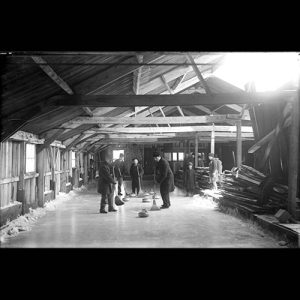 The Kincardine Curling Club was formed in 1875 and joined the Ontario Curling Association in 1877, making it one of the association’s oldest members.
The Kincardine Curling Club was formed in 1875 and joined the Ontario Curling Association in 1877, making it one of the association’s oldest members.
Curling took place on two sheets located in an arena on Lambton St. There was a skating rink there also, and a wooden wall separated the two. The photo seen here, taken by Kincardine photographer J.H. Scougall, is believed to be in the Lambton St. arena.
From the early 1930s to 1945 the club had ice in a building owned by the Town, but the Town turned the building over to Ripley Woodworkers for a chair manufacturing business. Curling continued on the skating rink one night a week, until George Malcolm purchased land on Penetangore Row and gave it to the curling club. This building opened in 1964, and the Kincardine Curling Club continues to be located there.

